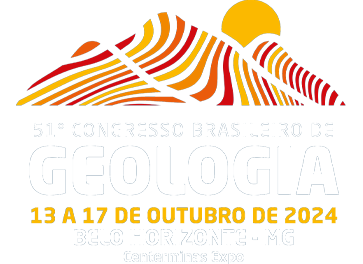Dados da Submissão
Título
Deciphering tectonic puzzles with petrochronology: insights from the Rio Apa Terrane, SW Amazonian Craton
Texto do resumo
Deciphering tectono-metamorphic evolution of Precambrian terrains is a challenging task in Geosciences, as superimposed events can partially or completely disturb the whole-rock elemental and isotopic geochemistry, and an array of mineral isotopic systems. Yet, such modifying processes do not affect all minerals and/or isotopic systems in the same way, thus employing a diverse range of techniques on a variety of mineral phases can reveal the complexity of tectonic events.
The Rio Apa Terrane is an allochthonous crustal fragment of the Amazonian Craton located in central-west South America (Brazil, Paraguay and Bolivia), interpreted to represent a long-lived accretionary orogen developed along the SW Amazonian Craton. Based on a large zircon U–Pb–Hf dataset (over 3,000 data), the Rio Apa Terrane records a protracted history that included a main advancing accretionary event between 2.1–1.8 Ga, followed by a retreating accretionary system, possibly due to slab roll back, between 1.80–1.72 Ga. Regional K-Ar and Ar-Ar data from biotite, muscovite and hornblende demonstrated the existence of a widespread thermal event in the Rio Apa Terrane at c. 1.3 Ga. Such a framework suggests a convergent plate setting on the margin of the Nuna supercontinent followed by an extended tectono-magmatic lull of c. 400 Ma, the setting of which remains uncertain.
We undertook a multidisciplinary investigation of the tectono-metamorphic evolution of the Rio Apa Terrane combining field-based structural analysis with phase-equilibria modelling, multi-mineral U–Pb–trace element petrochronology and novel in situ mica Rb–Sr and garnet Lu–Hf geochronology. Our results demonstrate that rather than a protracted lull, the region experienced four tectono-metamorphic events at c. 1780 Ma, c. 1625 Ma, 1420–1340 Ma and 1300–1200 Ma. The c. 1780 Ma extensional event recorded in the Western domain of the Rio Apa Terrane is coeval with the development of the Eastern domain in response to the retreat stage of the accretionary system. This is followed by the c. 1625 Ma event that juxtaposed the Western and Eastern domains, consolidating the Rio Apa Terrane as a single crustal entity. The 1420–1340 Ma and 1300–1200 Ma represent a progressive high-pressure and medium-temperature tectono-metamorphic event characterised by an anticlockwise pressure-temperature (P–T) path suggestive of a convergent-to-collisional tectonic setting. We suggest that the Rio Apa Terrane was accreted to the neighbouring Paraguá Terrane at c. 1420–1340 Ma under an isobaric P–T, subsequently colliding with the SW Amazonian Craton at c. 1300–1200 Ma. Our results demonstrated, for the first time, existence of a paired metamorphic belt in the region.
Our study demonstrates that the timing of tectono-metamorphic events in Precambrian terrains may not be revealed by conventional techniques such as zircon and monazite U–Pb geochronology, hence providing an incomplete tectonic framework for such terrains. Although zircon and monazite are key high-T geochronometers, a multi-technique approach enables the deciphering of tectonic puzzles by focusing on high- and medium-T petrochronometers that might shed light on hidden tectono-metamorphic events.
Palavras Chave
Amazonian Craton; Rio Apa Terrane; petrochronology; Isotope Geochemistry
Área
TEMA 17 - Tectônica e Evolução Geodinâmica
Autores/Proponentes
Bruno Vieira Ribeiro, Frederico Meira Faleiros, Peter Anthony Cawood, Melanie Finch
